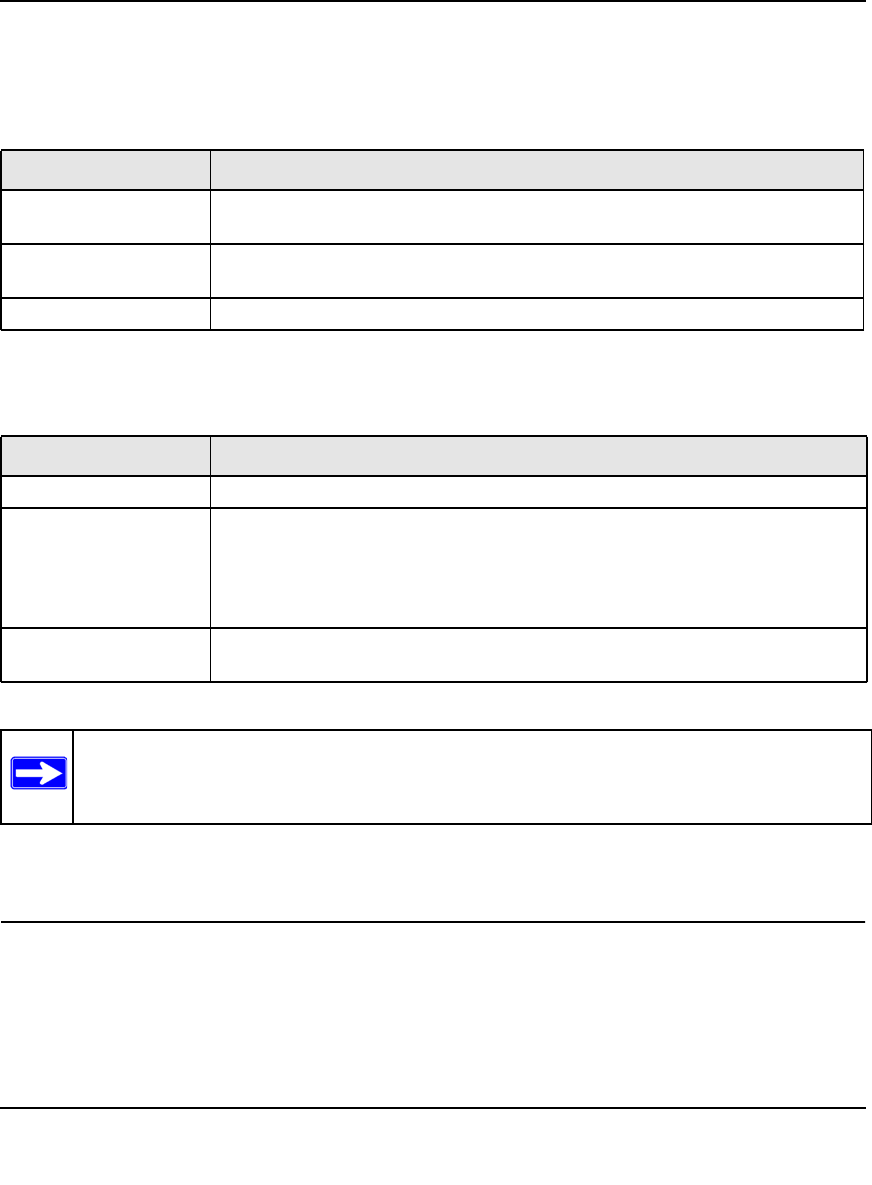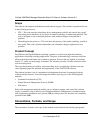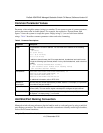
ProSafe XSM7224S Managed Stackable Switch CLI Manual, Software Version 9.0
Using the Command-Line Interface 1-4
v1.0, November 2010
The slot number has two uses. In the case of physical ports, it identifies the card containing the
ports. In the case of logical and CPU ports it also identifies the type of interface or port.
The port identifies the specific physical port or logical interface being managed on a given slot.
Using the “No” Form of a Command
The no keyword is a specific form of an existing command and does not represent a new or
distinct command. Almost every configuration command has a no form. In general, use the no
form to reverse the action of a command or reset a value back to the default. For example, the no
Table 3. Type of Slots
Slot Type Description
Physical slot numbers Physical slot numbers begin with zero, and are allocated up to the maximum
number of physical slots.
Logical slot numbers Logical slots immediately follow physical slots and identify port-channel (LAG) or
router interfaces.
CPU slot numbers The CPU slots immediately follow the logical slots.
Table 4. Type of Ports
Port Type Description
Physical Ports The physical ports for each slot are numbered sequentially starting from zero.
Logical Interfaces Port-channel or Link Aggregation Group (LAG) interfaces are logical interfaces
that are only used for bridging functions.
VLAN routing interfaces are only used for routing functions.
Loopback interfaces are logical interfaces that are always up.
Tunnel interfaces are logical point-to-point links that carry encapsulated packets.
CPU ports CPU ports are handled by the driver as one or more physical entities located on
physical slots.
Note: In the CLI, loopback and tunnel interfaces do not use the unit/slot/port format. To
specify a loopback interface, you use the loopback ID. To specify a tunnel
interface, you use the tunnel ID.


















